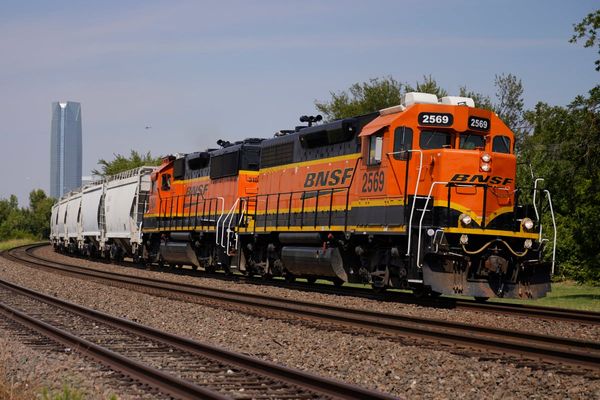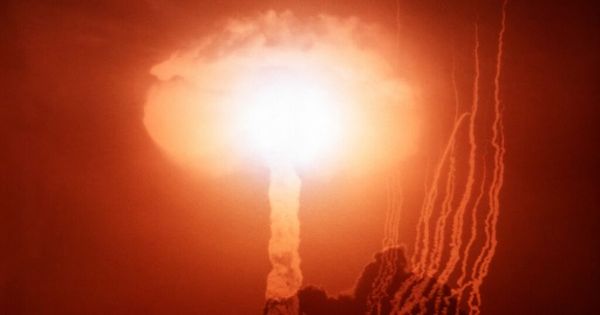
When Russia unveiled previously secret details of its nuclear-weapons doctrine for the first time in 2020, it confirmed something US war planners had long suspected: Moscow would be willing to use atomic arms to keep from losing a conventional war.
Since Russian President Vladimir Putin invaded Ukraine last month, he has repeatedly raised the specter of nuclear war, invoking his country’s atomic arsenal in an effort to deter the US and the North Atlantic Treaty Organization from getting involved in the conflict.
But as Mr. Putin’s army has faced fierce resistance from Ukrainian forces strengthened by large infusions of Western weaponry, concerns have grown in Washington and allied capitals that Russia could consider using a so-called tactical nuclear weapon to gain the upper hand on the battlefield.
Such weapons, which generally have a less powerful warhead than a strategic nuclear weapon carried on an intercontinental ballistic missile, were part of Cold War military thinking though they never figured into the arms-control agreements of the past between the U.S. and Russia or the Soviet Union.
The move would be aimed at crushing Ukraine’s will to fight, turning the tide of the war or signaling that current levels of Western support—including transfers of antitank and air-defense systems—are intolerable, Russian and Western analysts say.
The first use of an atomic weapon since the U.S. bombing of Hiroshima and Nagasaki at the end of World War II would likely cause major damage and radioactive contamination to any Ukrainian city hit—and perhaps beyond, depending on wind and other factors. It would also confront Washington and Europe with a major security test.
“We don’t know exactly where it is, the red line where the Russian leadership considers using tactical nuclear weapons," said Petr Topychkanov, a researcher at the Stockholm International Peace Research Institute. “The Russian leadership knows the value of ambiguity."
Further complicating efforts to predict Mr. Putin’s actions, Mr. Topychkanov said, is that it is difficult to gauge the nature of Kremlin decision-making. “The biggest question is how rational the Russian leadership is right now," he said. “I don’t know what kind of information he is getting."
In the days before the invasion, Mr. Putin led an exercise of Russia’s strategic forces, launching some of the country’s most cutting-edge missiles, like the hypersonic Kinzhal. At the start of the invasion he warned of consequences “the likes of which you have never seen in history" if the West intervened.
Days later, he stirred concern, ordering his military to ensure the “special combat readiness" of his nuclear forces.
While those threats were an overt nod to nuclear warfare, they failed to define where exactly Russia’s red lines are, observers of Russia’s nuclear policy say, giving Mr. Putin more latitude to escalate threats if he feels the need or even strike.
The point of a tactical nuclear strike to end a conventional conflict, based on doctrine known as “escalate to de-escalate," is to change the rules on the battlefield while shifting the burden of escalation onto your opponent, said Elbridge Colby, co-founder of The Marathon Initiative, a policy initiative focused on great-power competition.
“Putin could use a smaller warhead to protect what his conventional forces are doing," he said. “The Ukrainians may be the target, but the real target politically would be the U.S. and the West."
At the height of Cold War tensions, the use of nonstrategic nuclear weapons was never a threat to the U.S. directly, but since the fall of the U.S.S.R., American attempts to establish controls have been rebuffed by the Russians, according to a congressional report published earlier this year.
Russia leaned heavily on nuclear arms, including nonstrategic or tactical nuclear weapons, in its military thinking, largely because of the decay of the Russian armed forces following the Soviet Union’s collapse. Since Mr. Putin’s military modernization starting in 2008, nuclear arms have remained a military centerpiece, giving Moscow some sense of parity with the U.S.
At the same time its store of tactical nuclear weapons has remained high, with between 1,000 and 2,000 warheads, whereas the U.S. has just over 200, around 100 of which are in Europe, the congressional report said.
Despite active signaling, Russia has demurred at the idea of using nuclear weapons. Mr. Putin’s spokesman said on CNN that Moscow would use them only under existential threat, and Russian Deputy Foreign Minister Sergei Ryabkov said on state television: “We have a very responsible approach to that issue, we never escalate anything."
While the U.S. on one hand has made it clear it has no plans to cross any nuclear red lines in Ukraine—and even canceled a routine test launch of an Air Force Minuteman III missile to avoid escalating nuclear tensions with Russia—Washington has signaled the presence of its nuclear-capable forces in Europe this month.
Weeks before the Russian invasion, the U.S. sent B-52 strategic bombers to exercise with British and European air forces.
“There’s already some kind of signaling going on in Europe," said Hans Kristensen, director of the Nuclear Information Project at the Federation of American Scientists.
While tactical nuclear weapons could trigger bigger and more powerful strategic weapons in response, Mr. Kristensen said it wouldn’t mean immediate all-out nuclear war.
“I don’t think it’s likely to expect an automatic, super-rapid escalation to all-out," he said. “Both sides will want to look for ways to keep it limited because they both know full well what the consequences are of full escalation."
Analysts said Ukraine would be the most likely target for any tactical nuclear attack, but that escalation after that would be hard to predict, particularly if NATO got involved.
“You can’t imagine NATO would just sit by and watch it use nuclear weapons for the first time in 80 years and not do anything about it," Mr. Kristensen said.
NATO Secretary-General Jens Stoltenberg warned against letting the war in Ukraine slip into a nuclear conflict and told Russia to stop its nuclear rhetoric.
“Russia must stop its nuclear saber-rattling," said Mr. Stoltenberg last week ahead of a summit of the Western military alliance’s leaders in Brussels. “Any use of nuclear weapons will fundamentally change the nature of the conflict, and Russia must understand that a nuclear war should never be fought and they can never win a nuclear war."










